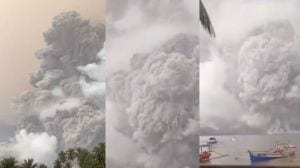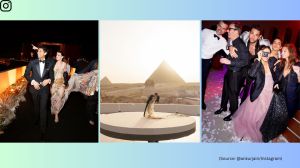- India
- International
Hubble reveals a ‘curious couple’ and river of star formation
The Hubble Space Telescope captured two interesting phenomena that tell us a lot about the cosmos.
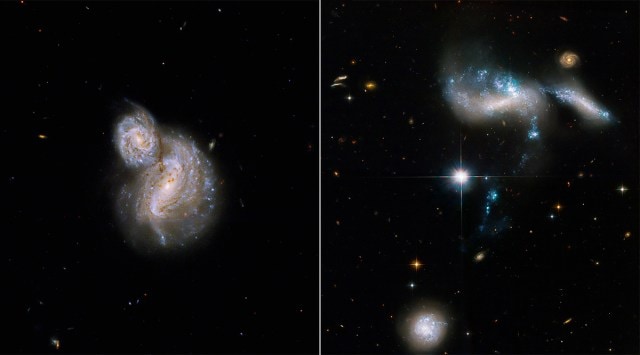 On the left is a couple of galaxies superimposed on each other. On the right, is a 'river' of star formation in a galaxy cluster. (Composite image) (Image credit: NASA, ESA, B. Holwerda, G. Kober, J. Charlton)
On the left is a couple of galaxies superimposed on each other. On the right, is a 'river' of star formation in a galaxy cluster. (Composite image) (Image credit: NASA, ESA, B. Holwerda, G. Kober, J. Charlton)Two interesting images from NASA’s Hubble Telescope show two very interesting phenomena taking place in the cosmos. The first one shows a special duo of galaxies where one is superimposed on the other and the latter shows a “stream of star formation.”
A Seyfert galaxy with a partner
Hubble captured images of IC 4271 (also known as Arp 40), a peculiar pair of spiral galaxies which are about 800 million light-years away. In this system, the smaller galaxy is superimposed on the larger one, which is a special kind of galaxy called a “Seyfert galaxy.”
Seyfert galaxies are named for astronomer Carl K Seyfert who published a paper about spiral galaxies with bright emission lines in 1943. Today, scientists know that about 10 per cent of all galaxies may be such galaxies. Seyfert galaxies have supermassive black holes at their centres and therefore accrete metal, releasing large amounts of radiation.
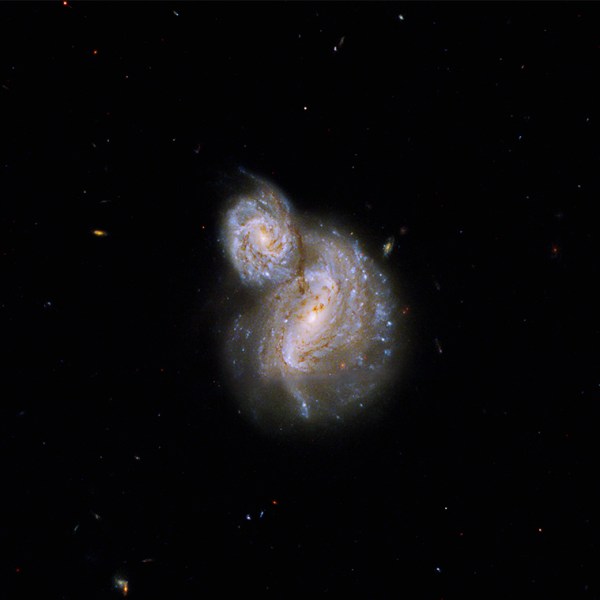 Image credit: NASA, ESA, and J. Charlton (Pennsylvania State University); Image processing: G. Kober (NASA Goddard/Catholic University of America)
Image credit: NASA, ESA, and J. Charlton (Pennsylvania State University); Image processing: G. Kober (NASA Goddard/Catholic University of America)
A Seyfert Galaxy’s brightest radiations typically occur in light outside the visible spectrum. The Seyfert Galaxy in the pair is a Type II Seyfert galaxy, which means that it is a very bright source of infrared and visible light.
The image uses data collected during Hubble observations which were done to study the role of dust in shaping the energy distributions of low mass galaxies. The Hubble telescope was making observations of six pairs of galaxies where one was in front of the other. The Hubble’s Wide Field Camera 3 is sensitive to a broad range of light. This allowed researchers to map the foreground galaxy’s dust disk in high detail across UV (ultraviolet), visible and infrared spectrums.

Since the bigger galaxy is a Type II Seyfert galaxy, the image is dominated by visible and infrared wavelengths of light. The majority of the colours in the image are primary visible light, while the colour violet represents ultraviolet light and red represents red and infrared light.
Hubble-observed ‘river of star formation’
A newly revised Hubble image of the Hickson Compact Group 31 (HCG 31) group of galaxies shows a stream of star formation as four dwarf galaxies interact. The bright, distorted clump of blue-white (right of centre, top half) stars is NGC 1741: a pair of colliding dwarf galaxies. A cigar-shaped dwarf galaxy to the pair’s right joins them with a thin blue stream of young blue stars.
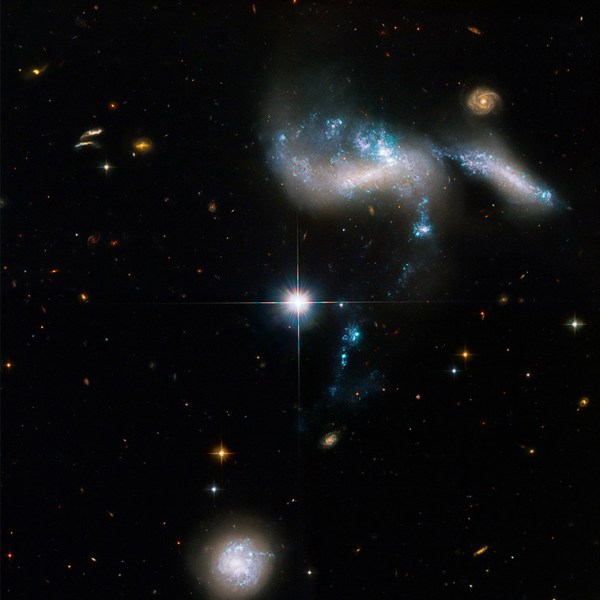 Image credit: NASA, ESA, and J. Charlton (Pennsylvania State University); Image processing: G. Kober (NASA Goddard/Catholic University of America)
Image credit: NASA, ESA, and J. Charlton (Pennsylvania State University); Image processing: G. Kober (NASA Goddard/Catholic University of America)
The bright object in the centre of the image is a star situated between the Earth and HCG 13. The fourth member of HCG 31 (left of centre, bottom) is a galaxy that is connected to the other three with a stream of stars.
More Tech
May 01: Latest News
- 01
- 02
- 03
- 04
- 05




















